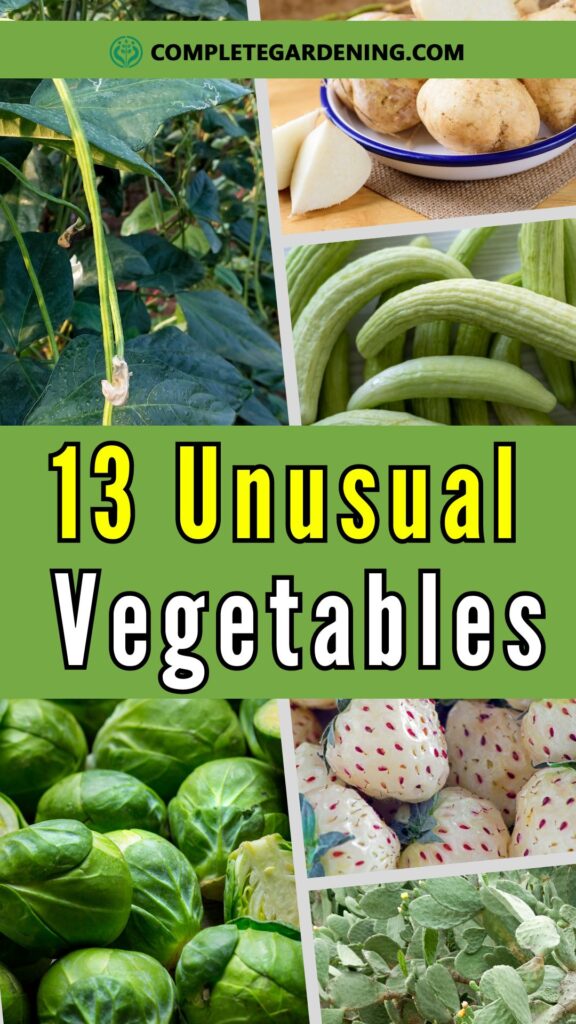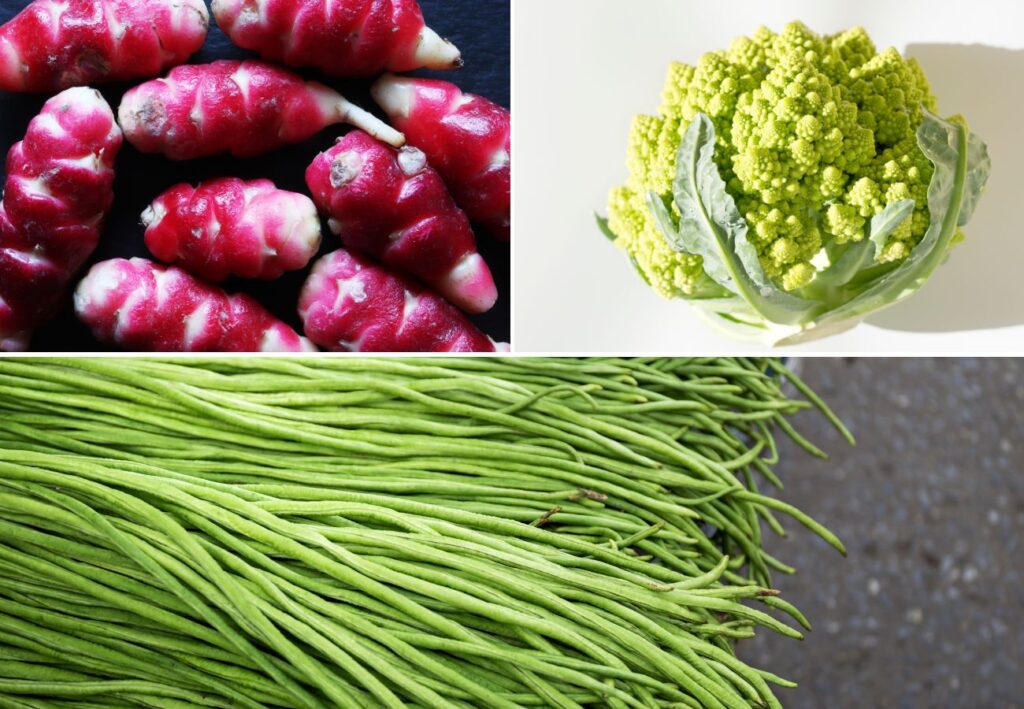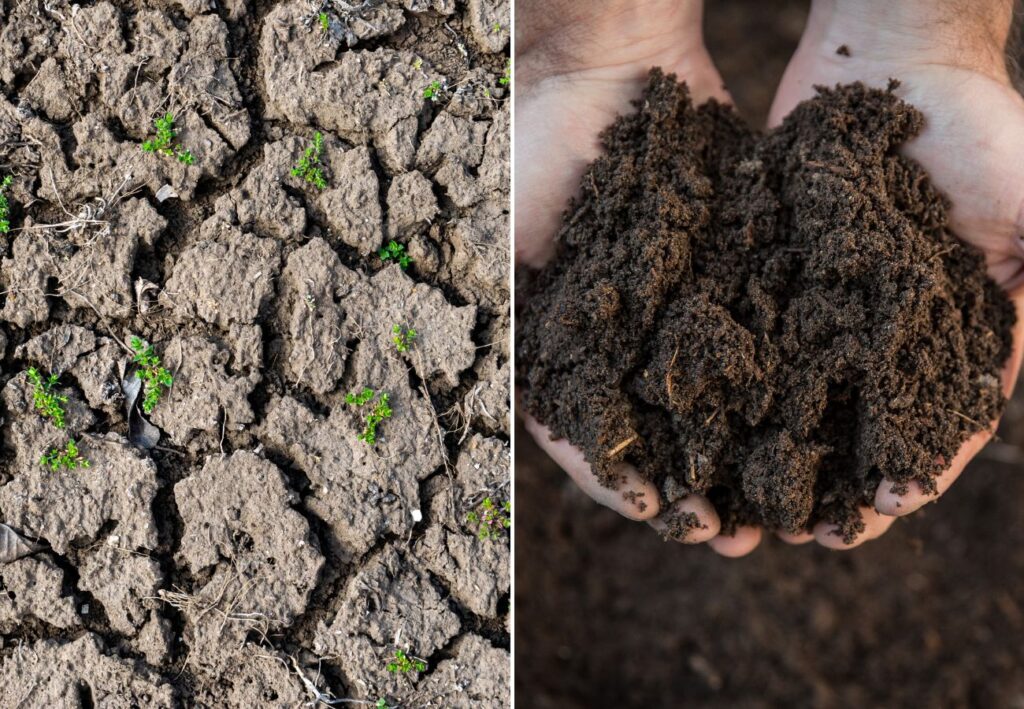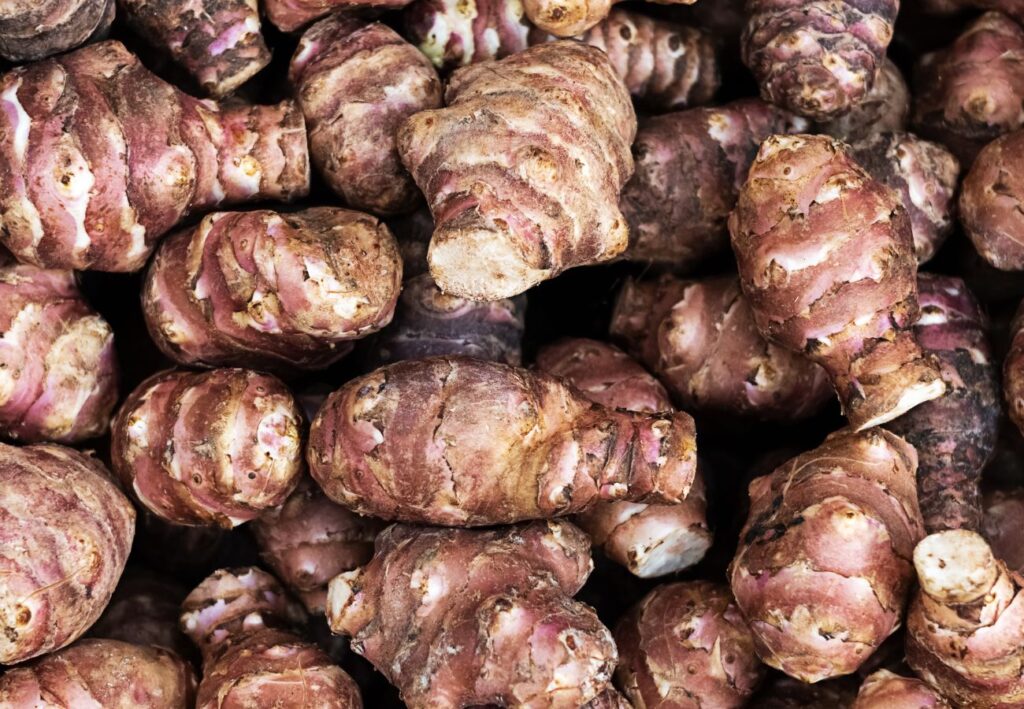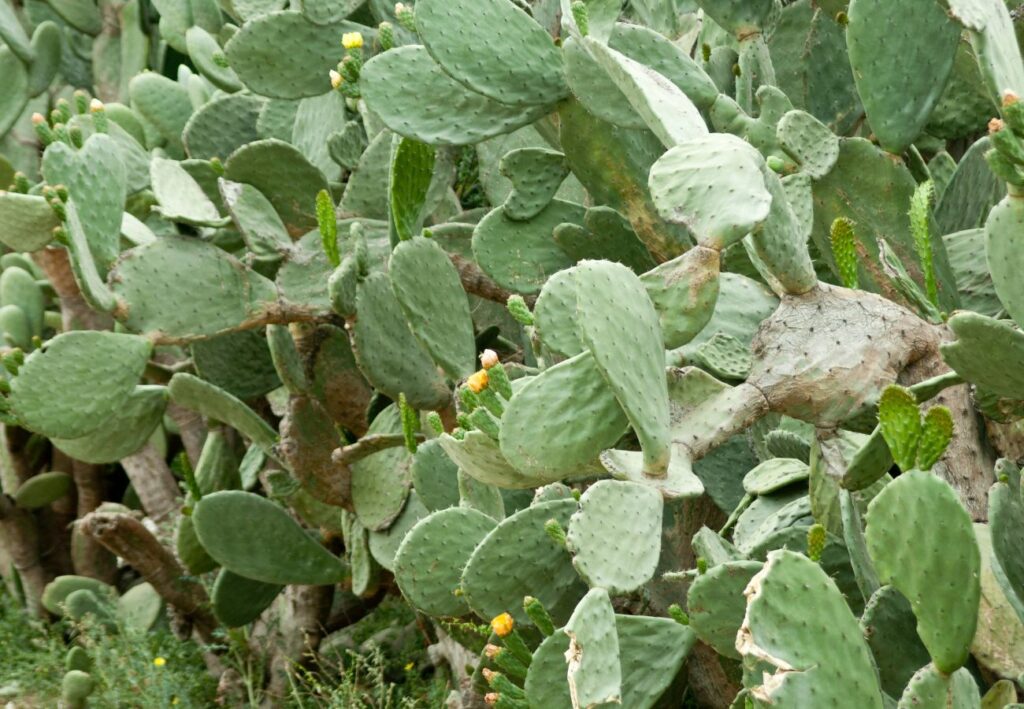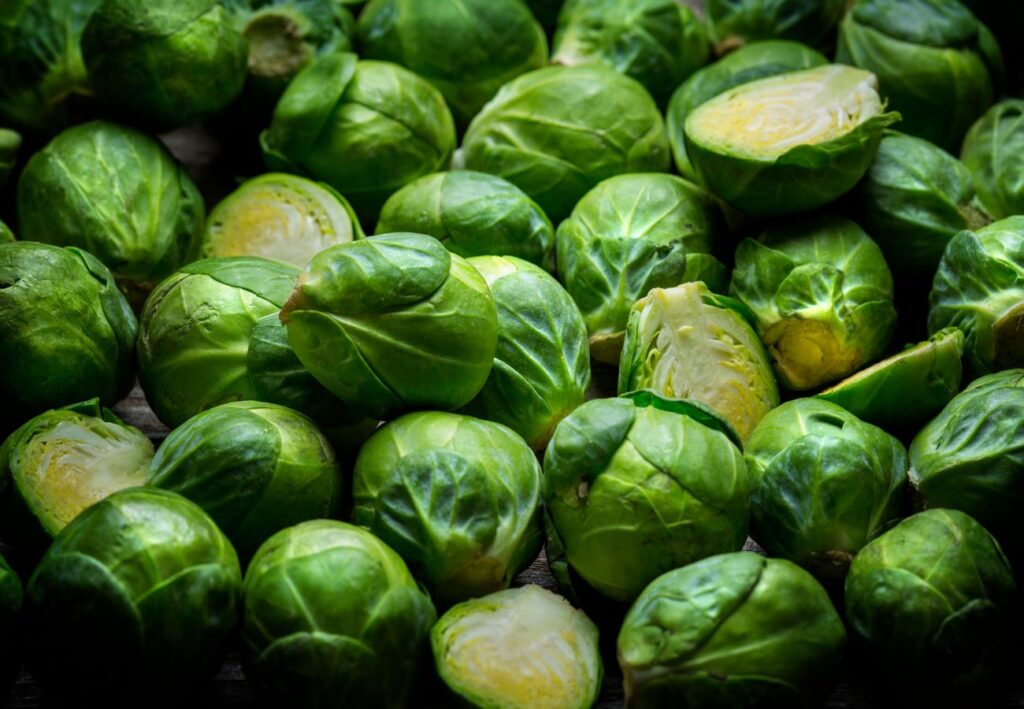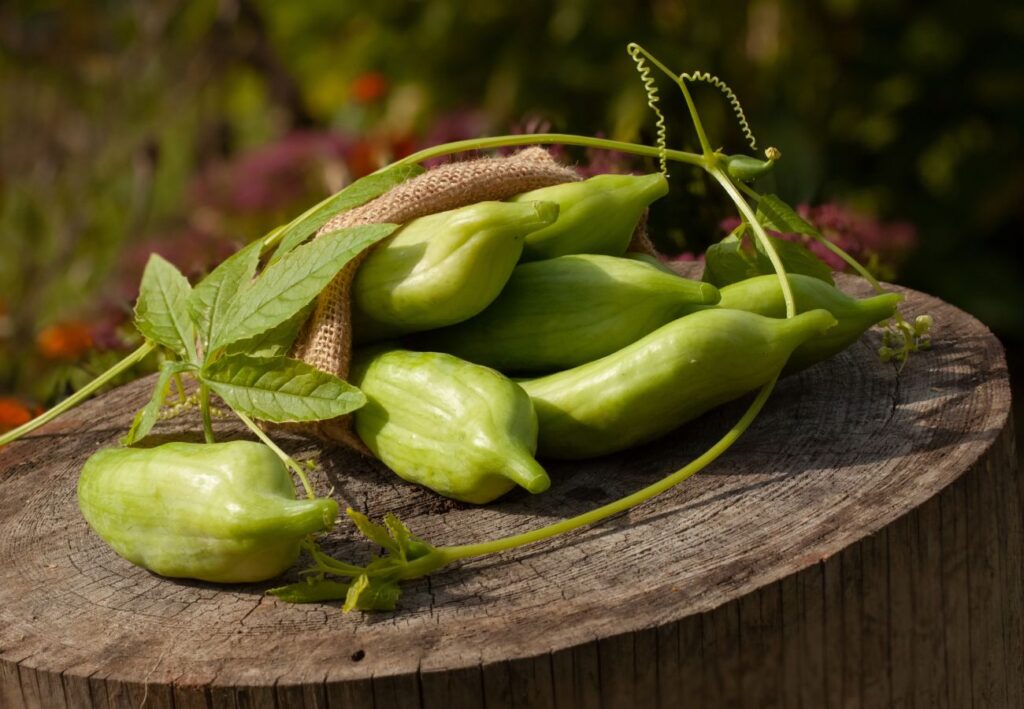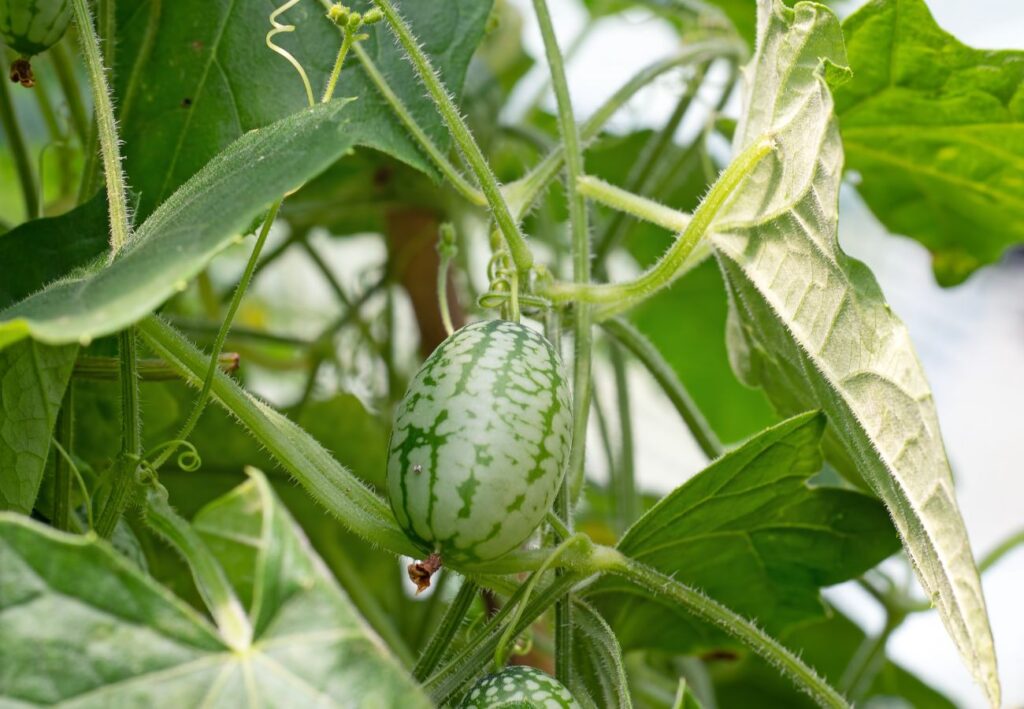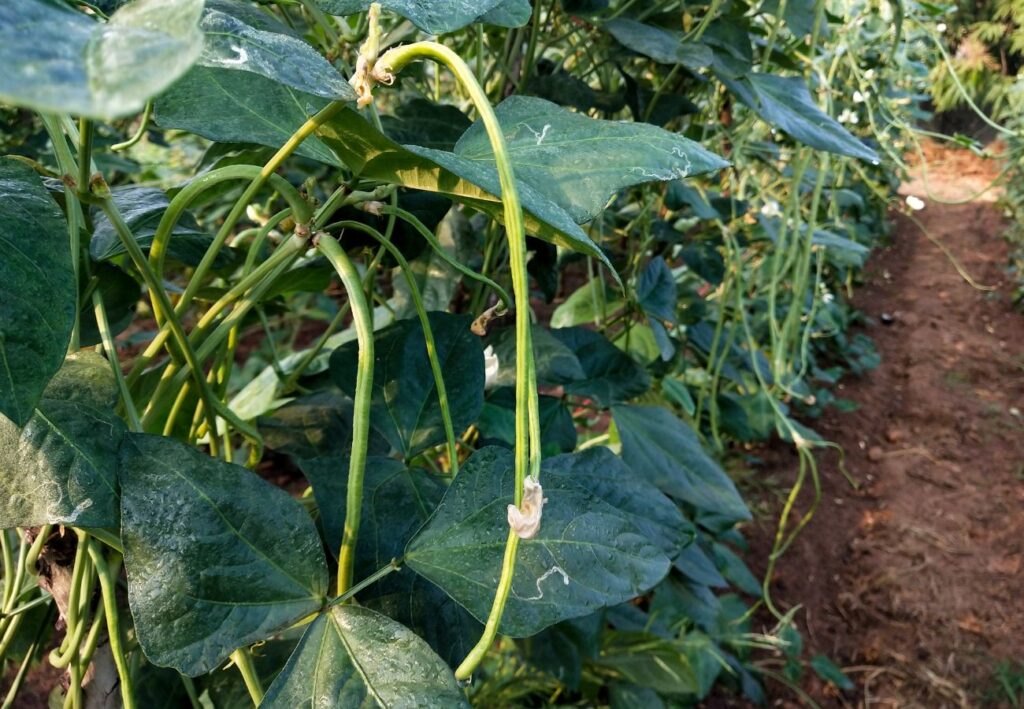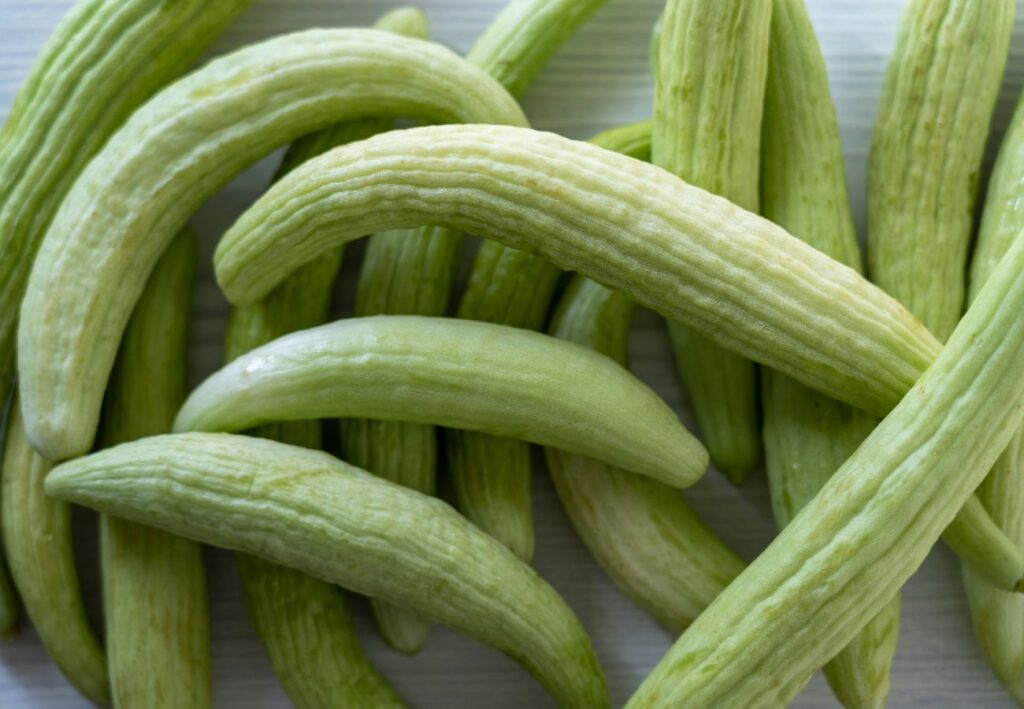If you’re tired of the same old tomatoes, cucumbers, and carrots in your garden, it’s time to shake things up with some unusual vegetables that are just as easy to grow.
Picture yourself harvesting vibrant Romanesco or crispy Yard-long beans straight from your backyard, adding a burst of color and flavor to your meals.
Exploring these unique veggies not only diversifies your diet but also brings a new level of excitement to your gardening routine.
From exotic Pineberries that resemble strawberries but taste like pineapples, to the versatile Nopales that can be cooked in countless ways, there’s so much to discover.
Quirky Cucamelons and nutty-flavored Sunchokes will even surprise seasoned gardeners.
Experimenting with these lesser-known vegetables will impress your dinner guests and turn your garden into a fascinating conversation piece.
Plus, adaptable veggies like Jicama and Armenian Cucumbers thrive in various soil conditions, flourishing with just a bit of care.
Get ready to be amazed by how these unexpected plants can transform your garden and your plate.
Getting Started with Unusual Vegetables
Growing unusual vegetables has numerous benefits, such as adding variety to your meals and enhancing your gardening skills. Keeping some essential tips in mind can ensure a successful and rewarding gardening experience.
Benefits of Growing Unusual Vegetables
Unusual vegetables like Oca, Romanesco, and Yard-long beans introduce unique flavors and textures to your dishes. They often have nutritional benefits that are not found in more common vegetables. Jicama, for instance, is rich in dietary fiber and vitamin C.
Growing these unique plants can also make your garden more interesting. Your backyard becomes a conversation starter as friends and neighbors see these unusual varieties.
Additionally, many uncommon vegetables are also pest-resistant, reducing the need for chemical interventions.
Essential Tips for Growing Unusual Vegetables
Start by researching the specific growing conditions and needs of each vegetable. For example, Sunchokes prefer well-drained soil, while Celeriac needs plenty of moisture. Matching the plants to your local climate ensures better growth.
Choose quality seeds or seedlings from reliable sources. Look for organic or heirloom varieties for the best results. Begin by planting in small quantities to understand how each plant responds to your backyard conditions.
Pay attention to spacing and companion planting. Some unusual vegetables, like Cucamelons, thrive when grown alongside other plants that provide natural support. Regular monitoring for pests and diseases can help you address issues quickly.
Root Vegetables with a Twist
Explore unusual root vegetables that bring unique flavors and textures to your garden and table. From the earthy celeriac to the sweet sunchoke, these roots are full of surprises.
Exploring the Earthy Delights of Celeriac
Celeriac, also known as celery root, is a knobby vegetable with a mild, celery-like flavor. Its creamy-white flesh is perfect for soups, stews, and mashes.
You can also roast celeriac or enjoy it raw in salads for a crunchy bite. It grows best in cool climates and prefers rich, well-drained soil. Make sure to plant celeriac in fertile ground and water it regularly.
Harvesting the Sweet and Nutty Sunchoke
Sunchokes, also called Jerusalem artichokes, have a sweet, nutty taste reminiscent of water chestnuts. They thrive in sunny areas and are relatively low-maintenance.
Plant the tubers in well-drained soil and space them about 12 inches apart. Sunchokes can be eaten raw or cooked. Roast them for a caramel-like flavor or add them to salads for a crisp texture.
The Versatile and Starchy Manioc
Manioc, also known as cassava or yuca, is a starchy root that can serve as a staple in many dishes. It can be boiled, fried, or mashed, providing a versatile ingredient for your kitchen.
Ensure you peel and cook manioc properly to remove any natural toxins. Grow it in well-drained soil and warm climates. Put the cuttings in the soil with the nodes facing up for best results.
Crunchy and Refreshing Jicama
Jicama is a crunchy, slightly sweet root vegetable that’s often eaten raw. Peel away its brown skin to reveal a white, juicy flesh inside. It’s perfect for adding a refreshing crunch to salads or as a healthy snack.
Jicama grows best in warm climates with well-drained soil. Plant the seeds in spring and provide consistent moisture. Enjoy it raw, often sprinkled with lime juice and chili powder for a zesty treat.
Unique Greens & Edible Cacti
Discover the charm of growing unique greens and edible cacti in your garden. From the spiky Nopales to the exotic Kohlrabi, add a touch of uniqueness to your backyard.
Cultivating the Spiky Nopales
Nopales, or prickly pear cactus pads, are a staple in Mexican cuisine. To grow them, select a sunny spot with well-drained soil.
Plant the pads at a shallow depth and water sparingly. Nopales are drought-tolerant and low-maintenance, thriving in arid conditions.
Harvest the pads when they are young and tender, usually in early summer. Use a sharp knife to cut them at the base. Besides their culinary uses, Nopales are packed with vitamins and minerals, making them a nutritious addition to your garden.
Experimenting with Brusselberry Sprouts
Brusselberry sprouts are a delightful twist on traditional Brussels sprouts. They grow similarly, needing full sun and rich soil. Start seeds indoors 6-8 weeks before the last frost, then transplant them outdoors.
These sprouts form tiny, berry-like clusters on tall stalks. Regular watering and mulching help retain moisture and keep roots cool. Harvest the sprouts when they are firm and green, around late fall.
Their unique appearance and slightly sweeter taste make them a fun and tasty garden experiment.
Growing Achocha for a Cucumber Alternative
Achocha, also known as Bolivian cucumber, is a prolific climber. Plant seeds directly in the ground after the last frost, or start them indoors 4-6 weeks prior. Provide a trellis or support for the vines to climb.
Achocha fruits resemble small, spiky cucumbers and can be eaten raw or cooked. They are pest-resistant and require minimal care beyond regular watering.
Harvest the fruits when they reach about 2-3 inches in length. Achocha adds a crisp, mild flavor to salads and stir-fries.
Kohlrabi: A Sputnik in Your Garden
Kohlrabi, often called the “Sputnik vegetable,” has a unique, bulbous shape. Plant seeds directly in the garden in early spring or late summer. This cool-season crop prefers full sun and fertile, well-drained soil.
Thin seedlings to 6-8 inches apart for proper growth. Kohlrabi requires consistent watering to keep the bulbs tender.
Harvest when the bulbs are 2-3 inches in diameter, before they become tough and woody. Peel away the tough outer skin to reveal a crisp, sweet interior. Use it in salads or as a crunchy snack.
Enjoy incorporating these unusual plants into your garden, each offering unique tastes and nutritional benefits.
Fruity Surprises
Some vegetables can offer fruity flavors or appearances that might surprise you. Pineberries and cucamelons stand out with their unique characteristics and ease of growth.
The Intriguing Pineberries
Pineberries resemble strawberries but have a creamy white color with red seeds.
These berries offer a taste similar to pineapple, making them a delightful surprise in your garden. They thrive in well-drained soil with lots of sunlight and are relatively easy to cultivate.
Optimal conditions:
- Soil: Well-drained, slightly acidic
- Sunlight: Full sun
- Water: Regular, consistent watering
These berries generally bear fruit in the late spring to early summer, providing a deliciously unique treat.
Cucamelons: Mini Watermelon Look-Alikes
Cucamelons, also known as Mexican sour gherkins, look like tiny watermelons but taste like cucumbers with a hint of citrus.
They’re easy to grow and need similar conditions to regular cucumbers. Plant them in late spring after the last frost.
Growing tips:
- Soil: Rich, well-drained
- Sunlight: Full sun
- Support: Provide a trellis for climbing
These small, grape-sized fruits are perfect for snacking, pickling, or adding to salads, making them a versatile addition to your garden.
Cultivating Unique Bean & Broccoli Varieties
Growing unique vegetables adds a touch of excitement to your garden. Yard-long beans bring height and interest, while Romanesco offers a visual and culinary treat. Armenian cucumbers are a delightful twist on a familiar vegetable.
Yard-Long Beans: The Climbers of Your Garden
Yard-long beans grow up to three feet long. These beans thrive in warm climates and prefer well-drained soil with plenty of sunlight. You should plant them after the last frost.
You will need a sturdy trellis for Yard-long beans. They climb vigorously and need support to grow vertically. Frequent harvesting encourages more beans to grow, so pick them when they reach about half their length for the best flavor.
Romanesco: The Spiral Wonder
Romanesco is known for its stunning fractal patterns and bright green color. You’ll want to start seeds indoors 6-8 weeks before the last frost, then transplant them outdoors when temperatures rise.
It needs a full-sun location and rich, well-drained soil. Consistent watering is crucial, as Romanesco heads can become distorted if the plant experiences drought stress. Once it starts forming heads, keep an eye out and harvest before the florets turn yellow.
Armenian Cucumbers: Melons Disguised as Cucumbers
Armenian cucumbers are perfect for those who want a crisp, melon-like cucumber. These cucumber-melons grow best in warm climates with well-drained soil. They can be planted directly in the garden after the threat of frost has passed.
Train them to climb a trellis to save space and keep the fruits clean. Regular watering helps maintain their crunchiness. Armenian cucumbers can grow up to two feet long but are usually harvested when they are about a foot long for the best taste.
Exploring unusual vegetables like Romanesco, Yard-long beans, Pineberries, Nopales, and Sunchokes can transform your garden into an exciting, diverse, and conversation-worthy space.
These unique plants not only add vibrant colors and intriguing shapes to your garden but also introduce new flavors and nutritional benefits to your meals.
By experimenting with these lesser-known varieties, you’ll enhance your gardening skills, impress your dinner guests, and discover the joy of cultivating something extraordinary.
So, take a step beyond the ordinary and let your garden flourish with these fascinating and delightful vegetables.

